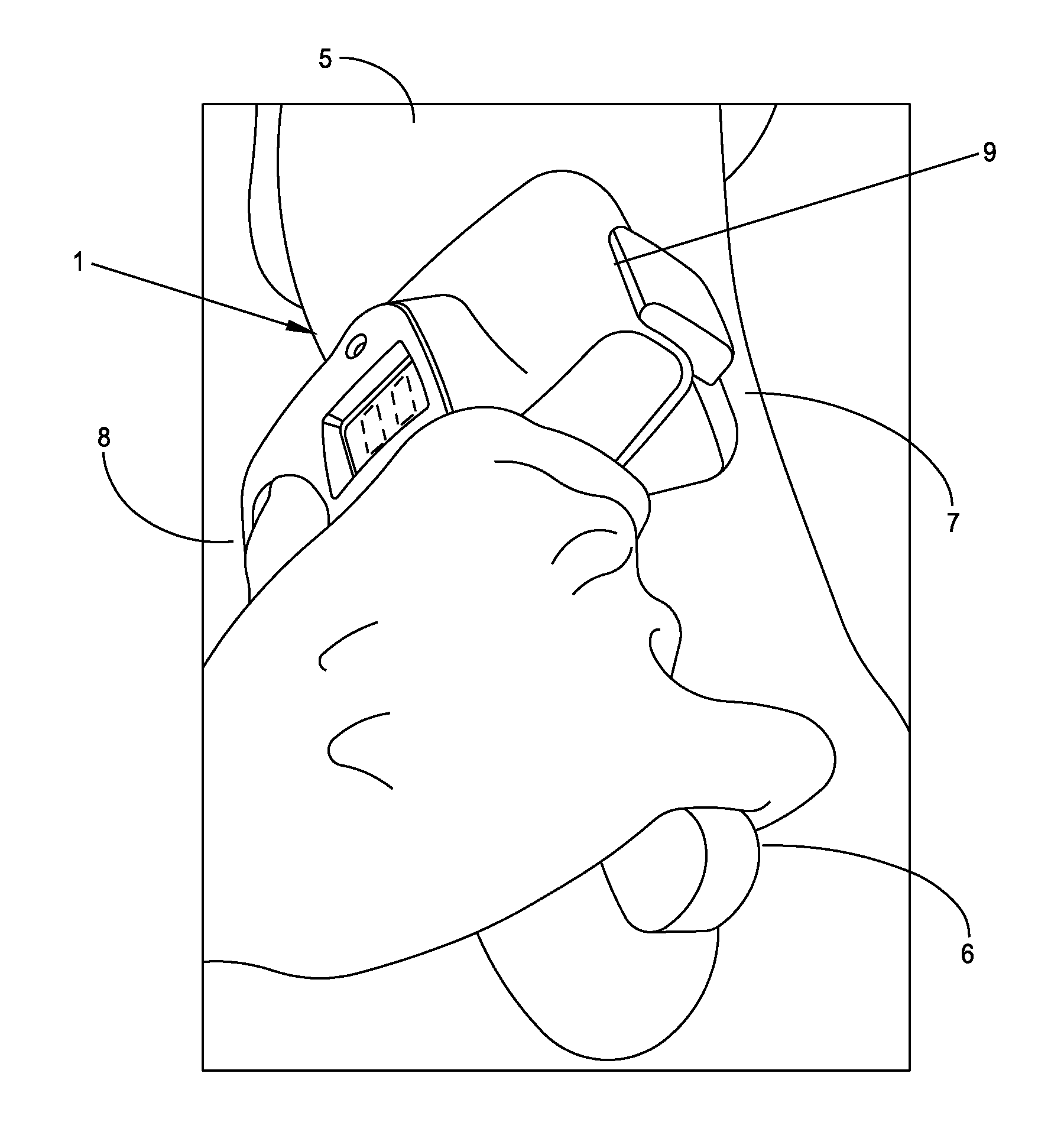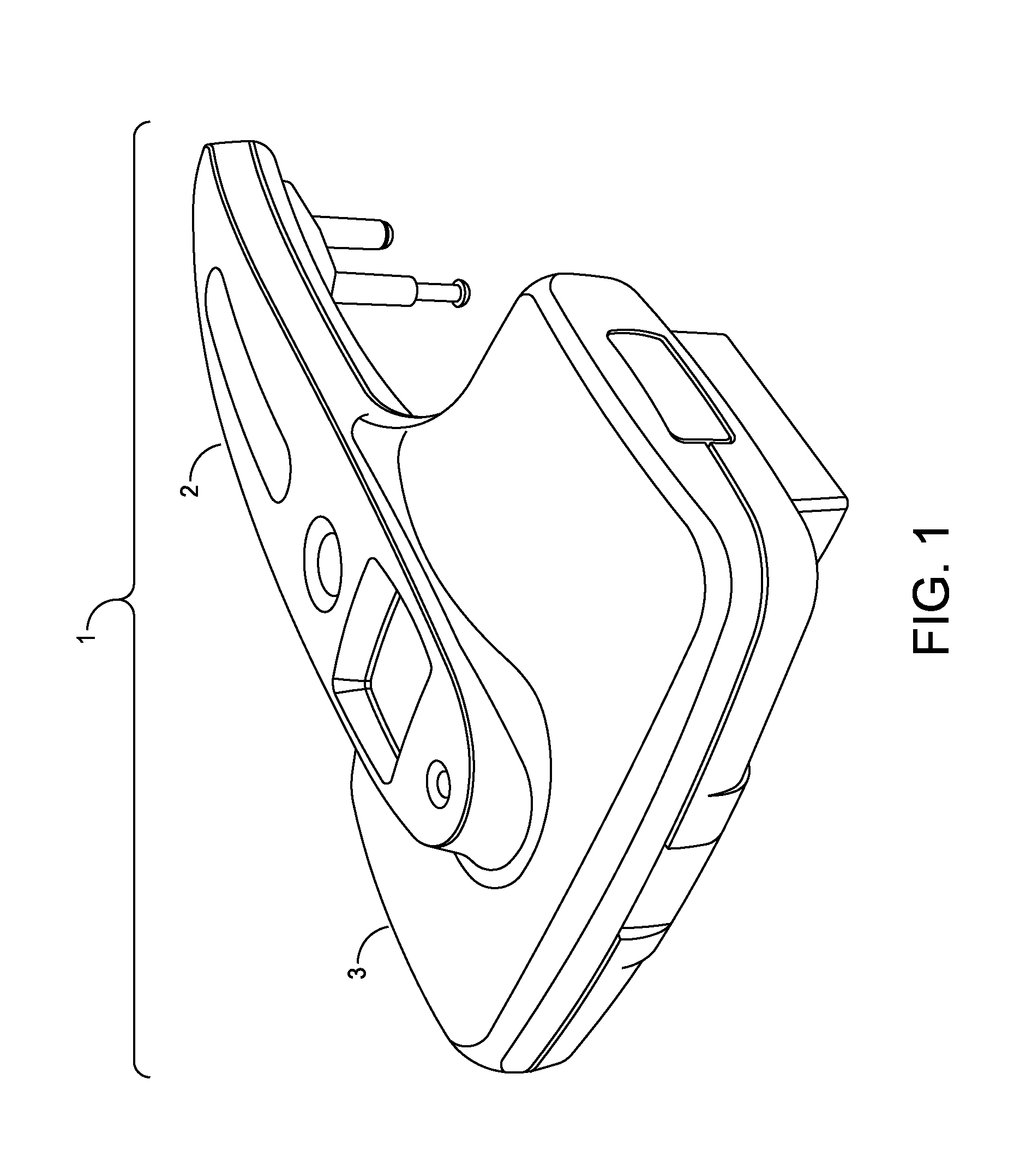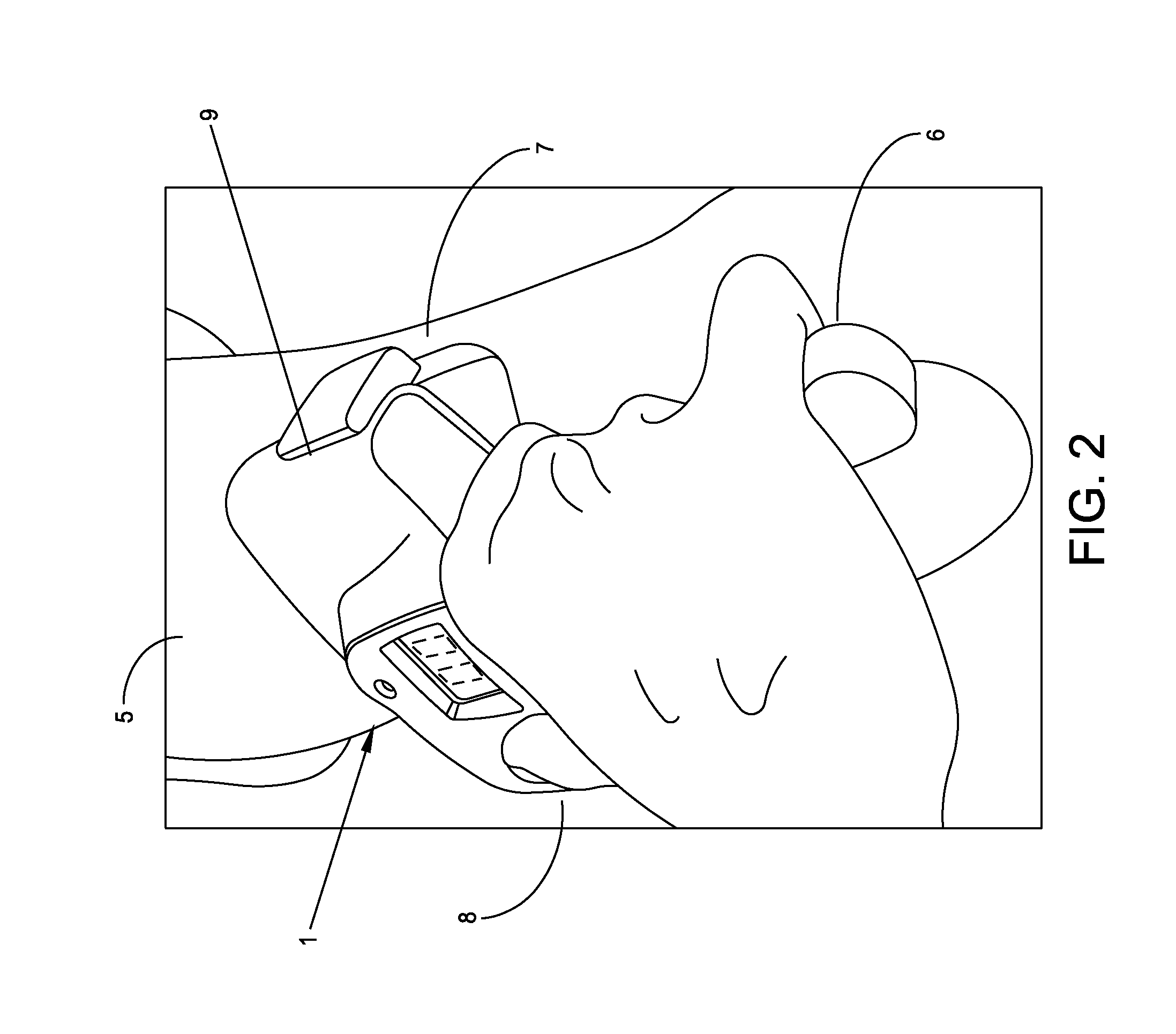Apparatus and method for stimulator on-skin short detection
a technology of stimulator and skin, applied in the field of stimulator peripheral nerve, can solve the problems of dm-associated morbidity and mortality, low blood glucose level, pain and disability of dpn
- Summary
- Abstract
- Description
- Claims
- Application Information
AI Technical Summary
Benefits of technology
Problems solved by technology
Method used
Image
Examples
Embodiment Construction
Device Description
[0052]The present invention is a fully-integrated, hand-held sural nerve conduction testing device. The device is designed exclusively for non-invasive nerve conduction measurements of the human sural nerve in the region of the lower calf and ankle. The sural nerve is an almost-entirely sensory nerve formed from the merger of the medial and lateral sural cutaneous nerves which are branches of the tibial and common fibular nerves (which are themselves branches of the sciatic nerve). After forming at the distal third of the gastroc muscle, the sural nerve runs down the leg on the posterior-lateral side, then posterior to the lateral malleolus where it runs deep to the fibularis tendon sheath and reaches the lateral tuberosity of the fifth toe, where it ramifies. The sural nerve transmits sensory signals from the posterior lateral corner of the leg, the lateral foot and the 5th toe.
[0053]Sural nerve conduction is a standard and quantitative biomarker of DPN. Sural ner...
PUM
 Login to View More
Login to View More Abstract
Description
Claims
Application Information
 Login to View More
Login to View More - R&D
- Intellectual Property
- Life Sciences
- Materials
- Tech Scout
- Unparalleled Data Quality
- Higher Quality Content
- 60% Fewer Hallucinations
Browse by: Latest US Patents, China's latest patents, Technical Efficacy Thesaurus, Application Domain, Technology Topic, Popular Technical Reports.
© 2025 PatSnap. All rights reserved.Legal|Privacy policy|Modern Slavery Act Transparency Statement|Sitemap|About US| Contact US: help@patsnap.com



